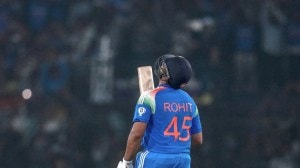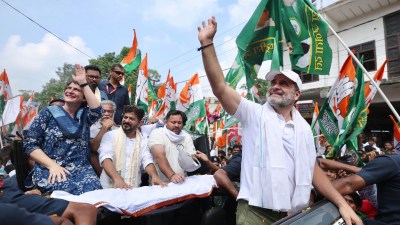Stay updated with the latest - Click here to follow us on Instagram
Of Indian Curry and Culture
The often overlooked and long history of the Indian presence in Britain is documented in an exhibition
On December 10,1934,unfamiliar patterns,hues and styles of Indian art met the condescending eyes of the West for the first time at the London Art Exhibition at New Burlington Galleries,with around 500 works by artists like VS Adurkar and Mukul Dey,among others. Hindu art, noted one British art critic,is almost wholly conventional in form and expression and beautiful in spirit,but it naturally became wearisome to Western eyes by repetition,sentimentality,distortion of form and monotonous colour. Typical of that era,the patronising attitude of the West helped little. The exhibition,nevertheless,made a significant mark in the history of Britain. The arrival of Indian art in Britain showed that Indian art could be seen from an aesthetic point of view,rather than simply as an anthropological study, points out Susheila Nasta,principal investigator of the extensively researched project Beyond the Frame: India in Britain,1858-1950,that focuses on the long,yet little-known,history of Indias
contribution to the UK,in the form of art,sports,politics,literature,army and so on.
A collaborative effort of the British Council,UKs The Open University and National Archives of India,Beyond the Frame is a compilation of articles,photographs and letters. The project centers around socio-political,cultural and intellectual contributions that Indians made to Britain during this period,which is also known for the largest Asian migration to Britain, says Nasta. Penny Brook,Lead Curator of the India Office Records in London,adds,This is possibly the first time that material from National Archives of India and British Library has been compiled.
The display in the exhibition is divided into sections like arts and intellectual life,sports and activism and politics,among others. While one can see heavy influences of intricate art of Gwalior,Khajuraho and Konarak in the1910-11 drawings of the British sculptor Jacob Epstein,information on Indians occupying high posts in Britain is also available in form of official records and photographs. Twenty-four-year-old Abdul Karim,for instance,was Queen Victorias secretary and adviser. The early 1920s saw Indian dancer Uday Shankar inspired by Ajanta caves for his performances partner with Russian ballerina Anna Pavlova at the Royal Opera House in London. British kitchen also saw significant influences,especially through Mulk Raj Anands book Curries and other Indian dishes (1932),and BBC radios Indian broadcaster,Venu Chitale,who offered Indian cookery lessons. The fact that Indians brought with them multiple visions of modernity is interesting, says Nasta. She points out that several discoveries were made while researching for the exhibition. When English poet,Wilfred Owen died in 1918,tucked in his pocket was a paper penned with verses of Rabindranath Tagores Geetanjali. The page is now on
display at the British Council.
The exhibition at the British Council and National Archives is on till December 5 and 30,respectively.







